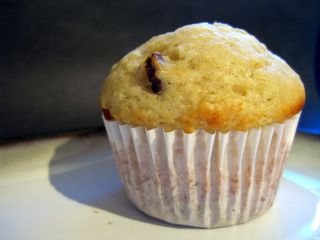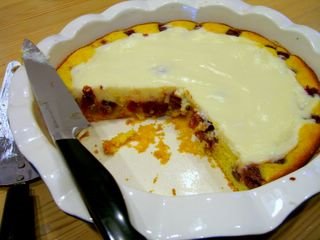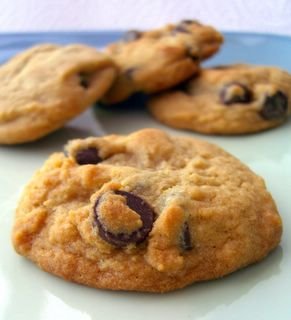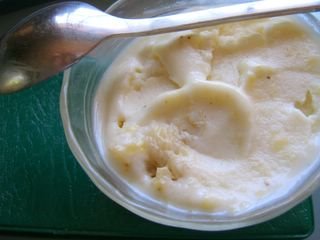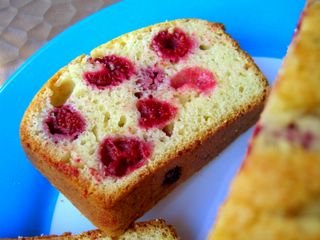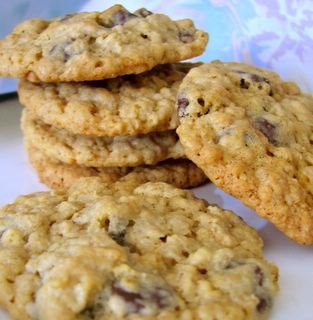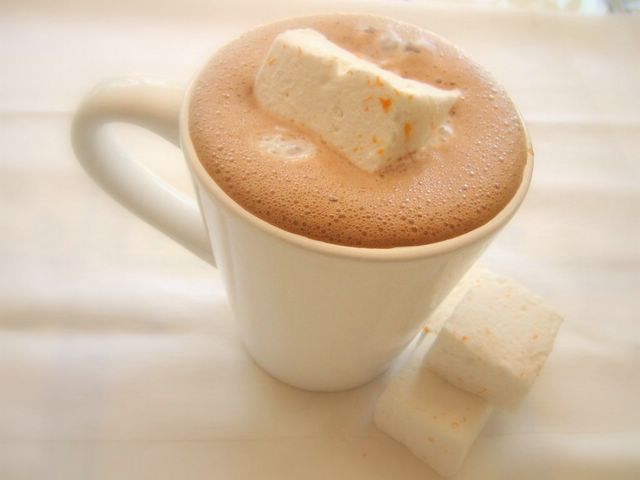Cooking School: Whoopie Pies
A whoopie pie is a commonly found treat in New England, but is relatively unknown elsewhere, especially on the West Coast. The pies are not really pies at all, as you have probably discerned from the photo above, but are two chocolate cookie/cake discs with a vanilla cream filling sandwiched between them. They're not like sandwich cookies and not like cream filled cupcakes, but are an entity unto themselves. No one can say for certain where the name came from, though the most widely held belief is that they were named after the reaction that they were intended to elicit from people who ate one.
This recipe comes from Tish Boyle's The Good Cookie (and is also available on Leite's Culinaria) and I like it because it doesn't use shortening in the filling. Don't get me wrong here: I have had some excellent cookie and cake fillings that use shortening and have no objection to using it in general, but the filling here is simply wonderful. It is very fresh tasting, and not at all greasy or heavy, as vegetable shortening-based fillings can occasionally be.
The cookies are moist and soft, with a rich and chocolaty flavor. They are not overly rich to the point where they overwhelm the flavor of the filling. You might feel compelled to eat them with a bit glass of milk, since they have a very nostalgic quality to them. They are a huge hit at parties, with adults and kids alike. The only change I would recommend making is to double the filling if you like a lot of cream in your whoopie pies.
The cookies are soft and keep very well when stored in an airtight container for several days - assuming that they last that long, of course. The two-bite sized cookies are awfully hard to resist.
Whoopie Pies
(recipe from The Good Cookie)
Cookies:
2 cups all purpose flour
1 cup cocoa powder
3/8 teaspoon salt
1/2 cup butter, very soft
1 cup sugar
1 large egg yolk
1 tsp vanilla extract
1 tsp baking soda
1/2 cup hot water
1/2 cup buttermilk
In a medium bowl, whisk together the flour, cocoa powder, and salt.
In a large bowl, cream together the butter and sugar until light, then beat in the egg yolk and vanilla extract.
Add the baking soda to the hot water.
Adding 1/3 of each ingredient at a time, stir in hot water, buttermilk and flour mixture to the butter/sugar mixture, making sure to end with an addition of dry ingredients and to mix only until just combined.
Shape dough into 1-inch balls and place on cookie sheets, flattening slightly.
Bake cookies for 5-7 minutes, until the tops of the cookies are cracked and cookies look set.
Cool completely on a wire rack before filling.
Filling:
2 cups confectioners' sugar
4 tbsp butter, very soft
3 tbsp heavy cream
1 tsp vanilla extract
small pinch of salt
With the mixer on a low speed, beat together the sugar and butter until combined. Mixture will be somewhat crumbly. Add in cream, vanilla and salt and beat at high speed until smooth.
Spread the cooled cookies with the filling. Double filling recipe if you want more, but the book recommends using one heaping teaspoon per sandwich.
Makes 24-28 whoopie pies.









